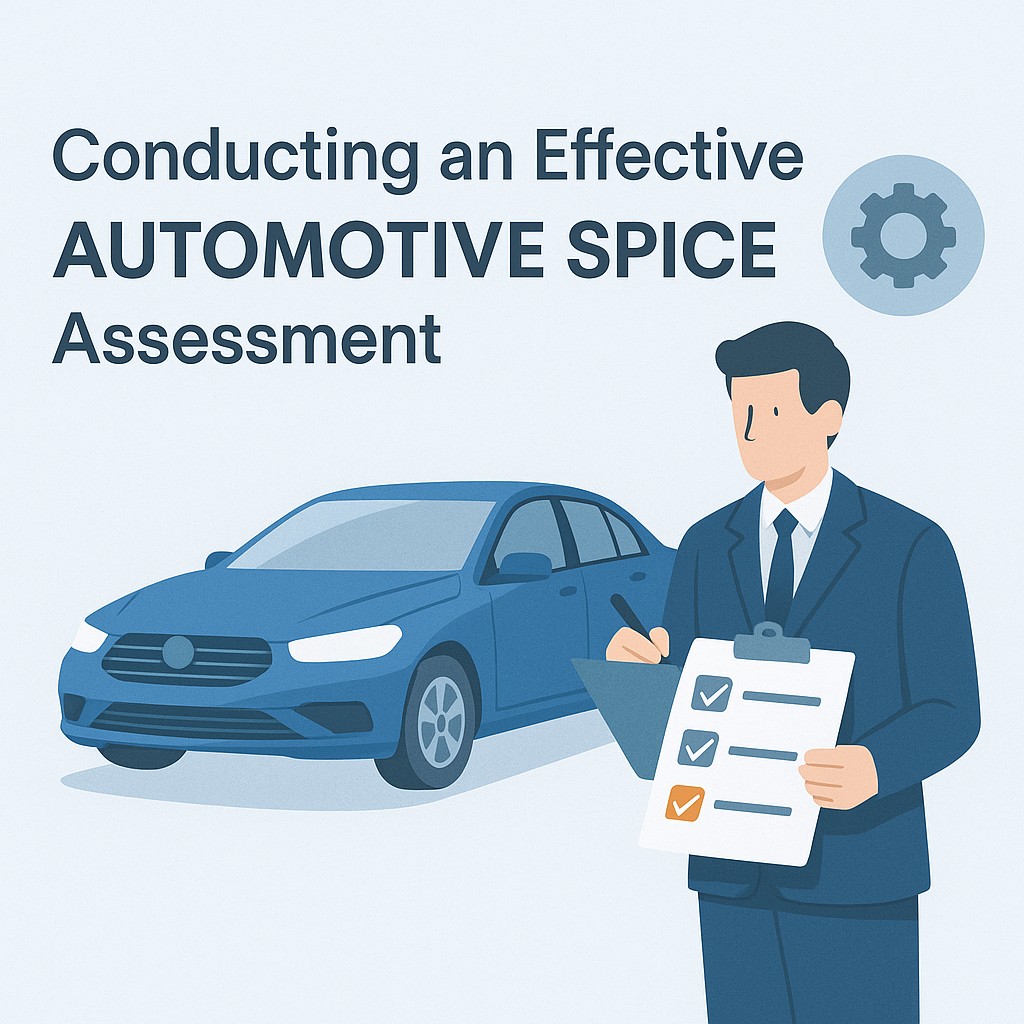
Introduction
An effective Automotive SPICE (ASPICE) assessment requires a structured approach, incorporating a comprehensive understanding of the project context, team dynamics, and adherence to relevant standards. This article outlines the key steps for a robust ASPICE assessment.
Initial Understanding and Situational Assessment
*Business and Domain Understanding*
Understand the business goals, domain-specific challenges, and project scope.
*Project Scope and Timeline*
Assess the project duration, current phase, and overall timeline.
*Team Competency and Experience Level*
Evaluate the team’s size, geographic distribution, and experience levels.
*Customer and Regulatory Requirements*
Identify customer requirements and relevant regulatory standards, such as cybersecurity and functional safety
*Standards and Guidelines*
Ensure compliance with all relevant standards in addition to ASPICE.
*Supplier and Partner Roles*
Understand the roles of various suppliers and partners involved.
*Toolchain and Technology Stack*
Analyze the tools and technologies used, including project management tools, CI/CD systems, and development environments.
*Historical Audits and Lessons Learned*
Review previous audit reports and historical defect data for recurring issues and lessons learned.
Contextual Understanding
*Project Phase*
Identify the current phase of the project to adjust the audit scope and focus accordingly.
Initial Assessment and Entry Criteria
*Process Definition and Lifecycle Overview*
Evaluate whether defined processes exist for the project lifecycle, covering all necessary stages.
*Helicopter View Assessment*
Perform a quick check of key artifacts like requirement documents, architecture documents, code quality, and CI/CD systems.
*Entry Criteria Evaluation*
Assess if the project meets the entry criteria for a detailed audit. Provide feedback if the project does not meet the criteria.
Detailed Audit Process
*Base Practice by Base Practice Assessment*
Conduct a detailed evaluation of each base practice (BP) according to the ASPICE standard.
*Comprehensive Process Audit*
Align the audit with the ASPICE standard and cross-reference with other relevant standards to generate comprehensive reports.
Summary and Common-Sense Approach
*Protecting Organization’s Time*
Preliminary assessments save time and resources by avoiding detailed audits for unprepared projects.
*Ensuring Effective Assessment*
A structured and phased approach ensures thorough yet efficient audits, providing valuable insights and actionable recommendations for process improvements.
Conclusion
A well-structured ASPICE assessment involves understanding the project context, evaluating team competencies, and ensuring adherence to relevant standards. Following a comprehensive and phased approach ensures effective and efficient audits, leading to improved processes and product quality.

Leave a Reply